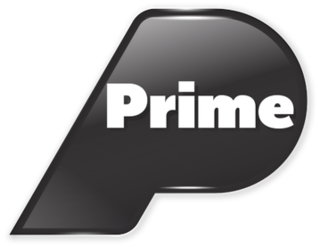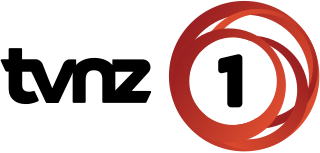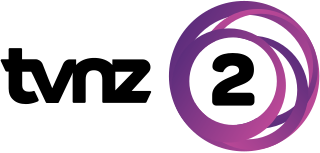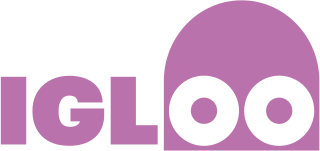
Freeview is the United Kingdom's sole digital terrestrial television platform. It is operated by DTV Services Ltd, a joint venture between the BBC, ITV, Channel 4, Sky and transmitter operator Arqiva. It was launched in 2002, taking over the licence from ITV Digital which collapsed that year. The service provides consumer access via an aerial to the seven DTT multiplexes covering the United Kingdom. As of July 2020, it has 85 TV channels, 26 digital radio channels, 10 HD channels, six text services, 11 streamed channels, and one interactive channel.
Television in New Zealand was introduced in 1960 as a state-run service. The broadcasting sector was deregulated in 1989, when the Government allowed competition to the state-owned Television New Zealand (TVNZ). There are currently three forms of broadcast television: a terrestrial (DVB-T) service provided by Freeview; satellite services provided nationwide by both Freeview and Sky; and an internet television service delivered over cable and fibre broadband provided by Vodafone.

Television New Zealand, more commonly referred to as TVNZ, is a television network that is broadcast throughout New Zealand and parts of the Pacific region. All of its currently-operating channels are free-to-air and commercially funded.
Three is a New Zealand nationwide television channel. Launched on 26 November 1989 as TV3, it was New Zealand's first privately-owned television channel. The channel currently broadcasts nationally in digital free-to-air form via the state-owned Kordia on terrestrial and satellite. Vodafone also carries the channel for their cable subscribers in Wellington and Christchurch. It previously broadcast nationally on analogue television until that was switched off on 1 December 2013.

FashionTV is an international fashion and lifestyle broadcasting television channel. Founded in France in 1997, by its Polish-born president Michel Adam Lisowski, FashionTV is a widely distributed satellite channels in the world with 31 satellite and 2,000 cable systems. As of 2014, it had 400 million views all over the world.

Prime is a New Zealand free-to-air television network. It airs a varied mix of programming, largely imported from Australia, the United Kingdom and the United States.
In most telecommunications organizations, a virtual channel is a method of remapping the program number as used in H.222 Program Association Tables and Program Mapping Tables to a channel number that can be entered via digits on a receiver's remote control.
Together TV is a British free-to-air television channel owned by The Community Channel, a community benefit society. The channel targets a women's audience aged 40 to 60, with programming related to health and wellness, hobbies, and creativity.

Cue TV was a regional television station in New Zealand which started in October 1996 as Mercury Television. The majority of its programming was from the Southern Institute of Technology (SIT2LRN), who used the channel as a nationwide local educational television service. Most of the non-educational programming on Cue TV was locally produced, with the remainder being from international sources like Deutsche Welle. The channel was available nationwide, on Freeview, Sky and Telstra.

TVNZ 1 is the first national television channel owned and operated by the state-owned broadcaster Television New Zealand (TVNZ). It was one of the major television broadcasters in New Zealand, starting out from 1960 onwards as independent government-operated facilities in the four main centres of Auckland, Wellington, Christchurch and Dunedin, and eventually began sharing programming between them all in real time in 1969, becoming NZBC TV. The collective group was renamed Television One in 1975 upon the break-up of the New Zealand Broadcasting Corporation, and became a part of TVNZ in 1980 when Television One and South Pacific Television merged. The channel assumed its current name in October 2016.

TVNZ 2 is the second New Zealand television channel owned and operated by the state-owned broadcaster Television New Zealand (TVNZ). It targets a younger audience than its sister channel, TVNZ 1. TVNZ 2's line up consists of dramas, comedies, and reality TV shows. A small number are produced in New Zealand which are either of a comedic, soap opera or reality nature, with rest of the line-up imported from mostly a Warner Bros. or Disney catalogue or a FremantleMedia or Endemol soap opera/reality TV catalogue.

Freeview is New Zealand's free-to-air television platform. It is operated by a joint venture between the country's major free-to-air broadcasters – government-owned Television New Zealand and Radio New Zealand, government-subsidised Māori Television, and the American-owned Discovery New Zealand. It consists of a HD-capable digital terrestrial television service, to around 86% of the population in the major urban and provincial centres of New Zealand, and a standard-definition satellite television service, called Freeview Satellite, covering the whole of mainland New Zealand and the major offshore islands. Freeview uses the DVB-S and DVB-T standards on government-provided spectrum.
DVB-T2 is an abbreviation for "Digital Video Broadcasting — Second Generation Terrestrial"; it is the extension of the television standard DVB-T, issued by the consortium DVB, devised for the broadcast transmission of digital terrestrial television. DVB has been standardized by ETSI.
There are four major forms of digital television (DTV) broadcast in the United Kingdom: a direct-to-home satellite service from the Astra 28.2°E satellites provided by Sky UK, a cable television service provided by Virgin Media ; a free-to-air satellite service called Freesat; and a free-to-air digital terrestrial service called Freeview. In addition, an IPTV system known as BT Vision is provided by BT. Individual access methods vary throughout the country. 77% of the United Kingdom has access to HDTV via terrestrial digital television. Satellite is the only source of HDTV broadcast available for the remaining 23%.
High-definition television in the United Kingdom is available via cable, IPTV, satellite and terrestrial television. The first high-definition broadcasts began in late 2005 and since then the number of channels available to view has grown to a maximum of 87 that can be viewed on pay-TV service, Sky.
Freeview is the brand name of the digital terrestrial television platform in Australia intended to bring all of free-to-air (FTA) broadcasters onto a consistent marketing platform, to compete against subscription television, in particular Foxtel. The strategy coincided with the expansion to 3 digital channels for each FTA network and the planned phasing out of analog television in Australia. Important services from Freeview include its free-to-air channels with an enhanced EPG across all channels. Freeview also certifies televisions, set-top boxes and personal video recorders (PVR) which meet its standards.
Freeview is the name for the collection of free-to-air services on the Digital Terrestrial Television platform in the United Kingdom. The service was launched at 5 am on 30 October 2002 and is jointly operated by its five equal shareholders – BBC, ITV, Channel 4, BSkyB and transmitter operator Arqiva. This article documents the history of the Freeview service, from its inception up to the present.

Igloo was a New Zealand prepaid pay TV service launched on 3 December 2012. The Pace-supplied receiver provides customers access to free-to-air channels through Freeview, and previously a small selection of pay TV channels could be purchased for 30 days. On 1 March 2017, Igloo closed and the receiver was updated to allow viewers to use New Zealand's Freeview television service.







